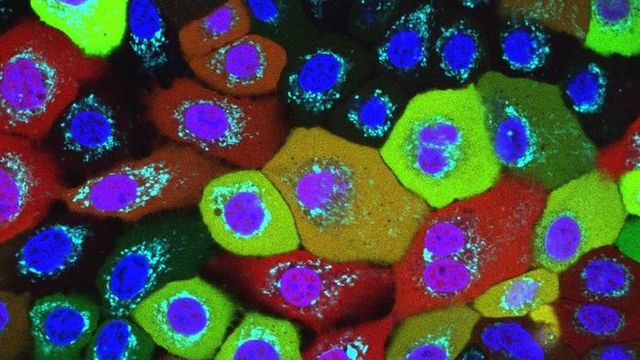Researchers at the Universities of Bonn and Singapore have discovered a new intracellular “smoke detector” molecule called NLRP10 that alerts of damage to the mitochondria, the microscopic power plants that supply the cell with energy. The sensor sets off a complicated process, creating an inflammasome that ultimately causes the cell to perish and be disposed of by summoned immune cells, preventing chronic inflammation. Disruption of this mechanism can result in chronic skin diseases, heart, and bowel disorders. The smoke detector is essential in ensuring the fire is stamped out straight away, preventing a prolonged smoldering fire that would damage other parts of the tissue. Large quantities of NLRP10 are found in the intestinal wall cells and the heart. The study may potentially open up new therapeutic perspectives by specifically modulating the NLRP10 sensor using certain substances to stimulate the formation of inflammasomes. This approach might enable better control of chronic skin diseases such as atopic dermatitis.
Researchers at the Universities of Bonn and Singapore have made a significant discovery of a new intracellular “smoke detector,” a molecule called NLRP10, that monitors the functioning of cells. The sensor alerts of any malfunction or damage to the mitochondria, the microscopic power plants that provide the cell with energy. If the smoke detector fails to function, it can result in chronic skin diseases, heart, and bowel disorders. The inflammasome, a complex molecular machine, creates a process that ultimately leads to the death of the cell and its disposal by summoned immune cells. This process prevents a prolonged smoldering fire that would damage other parts of the tissue, which can lead to chronic inflammation if disrupted. Killing cells with mitochondrial defects might sound drastic, but it ultimately prevents more severe consequences.
According to Professor Dr. Eicke Latz, the head of the Institute of Innate Immunity at the University Hospital Bonn, every cell in the body has several sensors that monitor its functioning. Some sound the alarm after a virus attack, while others kick in when any damage threatens the cell’s survival. However, NLRP10 was entirely unknown until this discovery.
NLRP10 detects the first sign of smoke when the mitochondria starts to malfunction in the cell. Once NLRP10 detects any damage to the mitochondria, it triggers a complicated process, creating an inflammasome that leads to the cell’s death and disposal by summoned immune cells. The smoke detector is essential in ensuring the fire is stamped out straight away, preventing a prolonged smoldering fire that would damage other parts of the tissue. If disrupted, chronic inflammation can result, leading to severe consequences.
The research result has now been published in the journal Nature Immunology. The smoke detector’s discovery could be crucial in preventing chronic skin diseases and maintaining unimpaired heart and bowel function, leading to healthy living.
Researchers have discovered that not all cells in the body have the NLRP10 sensor, which acts as a “fire detector” primarily in the outermost skin layer, the stratum granulosum. The skin is directly exposed to environmental stimuli such as UV radiation, but also pathogens, which could result in accumulated damage. The mechanism ensures that affected cells are effectively disposed of. However, if a mutation causes the NLRP10 sensor to malfunction, it can result in chronic skin inflammation called atopic dermatitis. Dr. Tomasz Próchnicki, who performed an important part of the experiments for his doctorate in Latz’s research group, explains the findings.
Large quantities of NLRP10 are also found in the intestinal wall cells and the heart. The intestinal wall cells have regular contact with pathogens and potentially harmful substances. The heart is particularly dependent on a well-functioning energy supply, making it especially important to quickly kill and replace cells with defective mitochondria.
The study may potentially open up new therapeutic perspectives by specifically modulating the NLRP10 sensor using certain substances to stimulate the formation of inflammasomes. This approach might enable better control of chronic skin diseases. The study has been published in the journal Nature Immunology.
Don’t miss interesting posts on Famousbio










